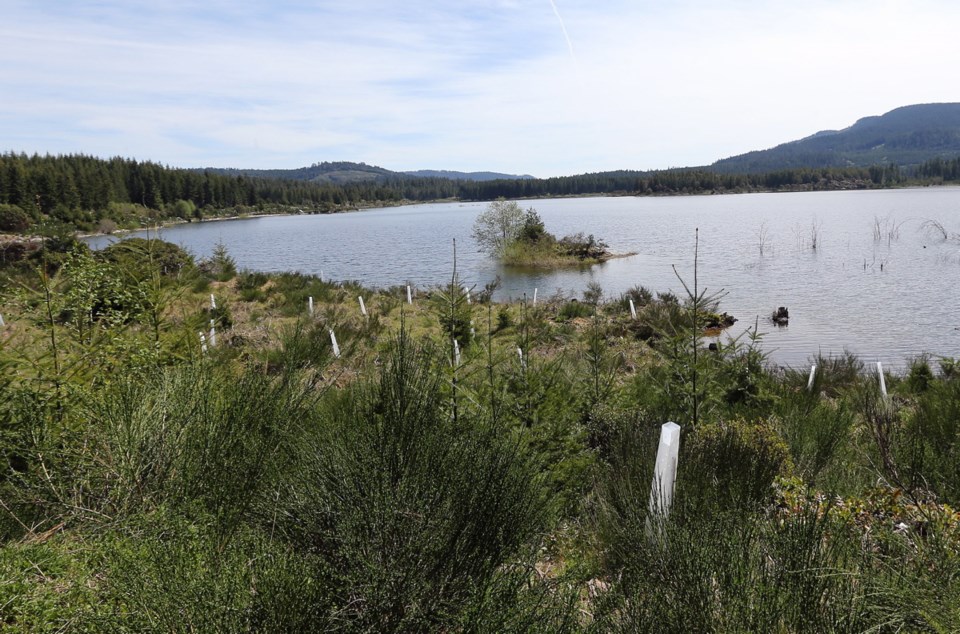The Sooke Lake Reservoir has filled more slowly this year, an indication of climate change, Capital Regional District water officials say.
It has been around 70 to 80 per cent full in the last couple of weeks. On Thursday at 4 p.m., the reservoir was 81.3 per cent full after several days with rain.
In contrast, in the previous three years, the reservoir was above 95 per cent by mid-December.
Ted Robbins, general manager of CRD integrated water services, said there is little concern, despite the reservoir’s comparatively low levels.
Robbins said weather and climate experts have told the CRD the amount of rain that falls each year on the watershed that supplies the region’s water is unlikely to change.
But climate change means it is more likely to be delivered over shorter intervals.
“So we still expect to see the same yearly amount of precipitation over the course of the year, even with the effects of climate change,” he said.
“But what we are expecting is that precipitation will come via more intense but shorter durations.
“From a water-supply perspective, as long as we continue to receive the expected amount of precipitation over the fall and winter months, it doesn’t pose any problem.”
Armel Castellan, a meteorologist with Environment Canada, agreed with the assessment of the likely precipitation.
He pointed out that what is driving most people’s concern about climate change is the earlier arrival, longer duration and more intense drought patterns over the summer months in coastal B.C.
Recent summers in B.C., Washington and Oregon are starting to resemble those in drought-ravaged California, where last month a record-setting wildfire killed at least 86 people.
“B.C. has had a very California-like pattern over the past few summers,” Castellan said.
“It’s not guaranteed we will see drought every single summer, but it’s certainly part of the discussion in trying to figure out how we will need to adapt to climate change.”
Johan Feddema, a geographer at the University of Victoria, said when considering climate change it’s important to consider as many of its aspects as possible. Then it’s important to consider how they interact and cause other things to occur.
Feddema said a small local example is that higher temperatures will evaporate more water and do it more quickly.
“You are losing more water from the entire watershed that’s feeding the reservoir and because it’s warmer, the trees are transpiring more moisture,” he said. “And, on top of that, you have less rainfall.
“What most people forget is that these things come together,” he said.
Feddema pointed out that longer, hotter summers with less frequent rain are likely to make forest fires more likely.
Robbins said a major forest fire in the water-supply area could have a terrible effect.
The CRD relies on an unfiltered supply of fresh water. After a forest fire, the water is likely to contain more sediment and organic matter.
“That added loading [of sediment], which we refer to as turbidity, would result in our inability to disinfect the water effectively,” Robbins said.
“We would likely be operating with a region-wide boil-water advisory if we had a major catastrophic wildfire.”



